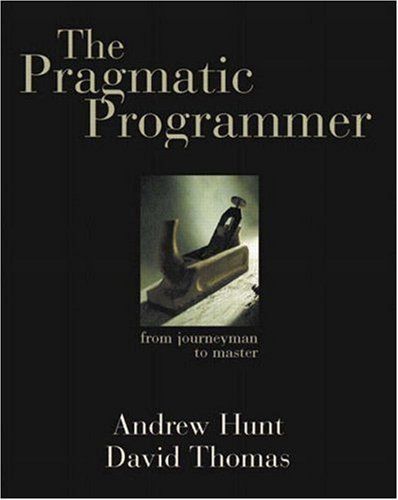
The Pragmatic Programmer From Journeyman to Master
Ward Cunningham Straight from the programming trenches, The Pragmatic Programmer cuts through the increasing specialization and technicalities of modern software development to examine the core process--taking a requirement and producing working, maintainable code that delights its users. It covers topics ranging from personal responsibility and career development to architectural techniques for keeping your code flexible and easy to adapt and reuse. Read this book, and you’ll learn how to Fight software rot; Avoid the trap of duplicating knowledge; Write flexible, dynamic, and adaptable code; Avoid programming by coincidence; Bullet-proof your code with contracts, assertions, and exceptions; Capture real requirements; Test ruthlessly and effectively; Delight your users; Build teams of pragmatic programmers; and Make your developments more precise with automation. Written as a series of self-contained sections and filled with entertaining anecdotes, thoughtful examples, and interesting analogies, The Pragmatic Programmer illustrates the best practices and major pitfalls of many different aspects of software development. Whether you’re a new coder, an experienced program.
Reviews
Christian Bager Bach Houmann@cbbh
micro niko@microniko
brendan sudol@bren
Ludovica@nagasaki
Carlos Becker@caarlos0
Phil K@readmorebooks
Prakash Rajendran@prakash
Timeo Williams@timeowilliams
Darren Olivier@darreno
Lovro Oreskovic@lovro
Javi Velasco@javivelasco
Sofia@sofiafrocha
Jb@jbr1992
Mt Tetzel@mrzool
Tyler Gibbs@tylerswe
Cihat Salik@cihat
Mustafa Hussain@mhussain
Georgi Mitrev@gmitrev
Sean Leach@kickdaddy
Gabriel Ayuso@gabrielayuso
Robson Roberto Souza Peixoto@robsonpeixoto
Ben Jessup@benjessup
Joe Maddalone@joemaddalone
Mateusz Gostanski@mgostanski